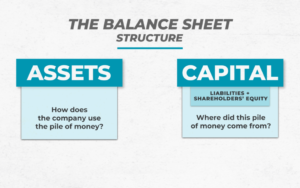 Liabilities on the Balance Sheet
Liabilities on the Balance Sheet
Liabilities on the balance sheet of a contractual service provider hold significant importance as they represent the financial obligations and debts that the company owes to external parties. These obligations arise from past transactions or events and require the company to provide economic benefits in the future.
Here’s a breakdown of the significance of liabilities on the balance sheet:
Creditor Claims:
Liabilities primarily represent the claims of external parties, such as creditors, suppliers, lenders, and other stakeholders.
Who have provided goods, services, or funds to the company on credit. These obligations must be fulfilled by the contractual service provider as per the terms and conditions agreed upon.
Financial Health Assessment:
Liabilities provide insight into the company’s financial health and its ability to meet its short-term and long-term obligations.
A higher proportion of short-term liabilities relative to long-term liabilities could indicate potential liquidity challenges.
Business Operations:
Liabilities can play a role in the company’s day-to-day operations by allowing it to access necessary funds to finance its activities.
For example, short-term liabilities like accounts payable can be used to manage working capital and fund ongoing operations.
Contractual Commitments:
Contractual service providers often enter into various agreements, contracts, and obligations to provide services to clients.
The associated liabilities reflect the company’s commitment to fulfill these services and potentially include costs like warranties, guarantees, or performance-related obligations.
Investor and Creditor Confidence:
The balance sheet, including the liabilities section, is a key document that investors and creditors analyze to assess the company’s financial stability and risk profile.
Higher liabilities might raise concerns about the company’s ability to manage its debt load and meet its obligations.
Debt Management:
Different types of liabilities, such as long-term loans, bonds, and leases, can have varying terms, interest rates, and maturity dates. Managing these liabilities efficiently is crucial to minimizing interest costs and ensuring that the company remains solvent over the long term.
Disclosure and Transparency:
Financial reporting standards mandate that companies transparently disclose their liabilities in their financial statements. This ensures that stakeholders have accurate and reliable information about the company’s financial position.
Risk Assessment:
Liabilities can help identify potential risks associated with the company’s financial structure. For instance, a high debt-to-equity ratio might suggest the company is highly leveraged, making it vulnerable to economic downturns or interest rate fluctuations.
In summary, liabilities on the balance sheet of a contractual service provider reflect the company’s financial obligations and commitments arising from past transactions. Monitoring and managing these liabilities effectively are essential for maintaining a healthy financial position, meeting contractual obligations, and instilling confidence in investors, creditors, and other stakeholders.
To visit: https://www.incometax.gov.in
